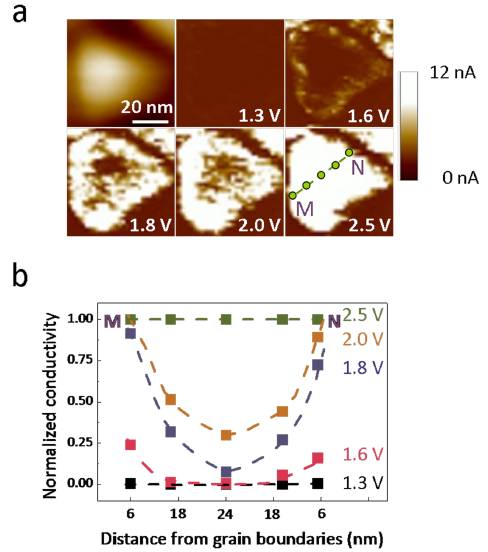The past decades have witnessed the development of many technologies based on nanoionics, especially lithium-ion batteries (LIBs). Now there is an urgent need for developing LIBs with good high-rate capability and high power. LIBs with nanostructured electrodes show great potentials for achieving such goals. However, the nature of Li-ion transport behaviors within the nanostructured electrodes is not well clarified yet. Here, Li-ion transport behaviors in LixCoO2 nanograins are investigated by employing conductive atomic force microscopy (C-AFM) technique to study the local Li-ion diffusion induced conductance change behaviors with a spatial resolution of ,10 nm. It is found that grain boundary has a low Li-ion diffusion energy barrier and provides a fast Li-ion diffusion pathway, which is also confirmed by our first principles calculation. This information provides important guidelines for designing high performance LIBs from a point view of optimizing the electrode material microstructures and the development of nanoionics.
This work was supported by State Key Research Program of China (973 Program, 2009CB930803, 2012CB933004), Chinese Academy of Sciences (CAS), National Natural Science Foundation of China (51172250), Zhejiang and Ningbo Natural Science Foundations, and Science and Technology Innovative Research Team of Ningbo Municipality (2009B21005, 2011B82004).

(a) Morphology image and current images obtained at 0.5 V after scanning the sample under various bias voltages. The amplitude of the voltages applied to change the conductance states before C-AFM acquirements are shown in the corresponding current images. (b) Normalized conductivity as a function of the distance away from the nearest grain boundary. The specific tip locations are indicated in the current image in Fig. 3a. The lateral size of the scanned grain is around 45 nm.